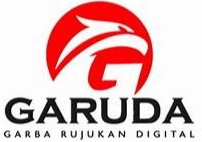Perancangan dan Perencanaan Mesin Pemipih Emping Jagung Skala Industri
DOI: https://doi.org/10.25077/metal.4.2.82-86.2020
Author(s)
Gilang Gerry Garnida (Jurusan Teknik Mesin Politeknik Negeri Bandung)Rudy Yuni Widiatmoko (Jurusan Teknik Mesin Politeknik Negeri Bandung)
Syahrul Ariq Ismail (Jurusan Teknik Mesin, Politeknik Negeri Bandung)
Donny Firli Ardiawan (Jurusan Teknik Industri, Universitas Telkom, Bandung)
Nuha Desi Anggraeni (Jurusan Teknik Mesin, Institut Teknologi Nasional, Bandung)
Budiana Ruslan (Jurusan Administrasi Bisnis, Sekolah Tinggi Ilmu Administrasi Bagasasi, Bandung)
Abstract
UKM XYZ is a corn chips processing business that still uses the traditional method which requires a lot of time and effort. From this problem, the idea emerged to design a corn chip flattening machine which aims to speed up production time and reduce the energy spent processing corn chips. The research stage consisted of the problem identification stage, the goal-setting stage, the drafting stage, and the planning stage. The EOQ Economic Order Quantity method is used to determine the forecast for raw material requirements, the forecasting result is 11.7408 kg. The corn sheller machine is designed to have a capacity of 80 kg/hour, using a 120-watt electric motor, which is connected using a pulley and a belt to 2 axles with a diameter of 30 mm with a length of 620 mm and 570 mm in order to meet the needs of UKM XYZ. On the shaft, a gear is attached to cause rotation of the 2 axles in opposite directions. The piping uses 2 rollers with a diameter of 100 mm and a length of 400 mm. Component materials that have contact with corn use AISI 304 material because this material has high tensile strength and is categorized as a standard material for processing food.
Keywords
Full Text:
PDFReferences
A. Rizki, Y. Yudistira, Rancang Bangun Mesin Pemipih Emping Jagung. J Appl Agric Sci Technol 2017;1:1–7. https://doi.org/10.32530/jaast.v1i1.18.
PROFIL USAHA/PERUSAHAAN 16 SUBSEKTOR EKRAF BERDASARKAN SENSUS EKONOMI 2016 (SE2016). Diterbitkan oleh: Badan Pusat Statistik Dicetak; 2016.
I, Konstantaras, K. Skouri, A.G. Lagodimos, EOQ with independent endogenous supply disruptions. Omega (United Kingdom) 2019.
https://doi.org/10.1016/j.omega.2018.02.006.
R. A. Rahman, P. Deoranto, R.L.R Silalahi, Perencanaan Kebutuhan Baku Emping Jagung Menggunakan Metode Economic Order Quantity ( Studi Kasus Ukm Jaya Barokah Sentosa, Malang ). Universitas Brawijaya, 2014.
ECONOMIC ORDER QUANTITY (EOQ) MODEL. Encycl. Prod. Manuf. Manag., 2006. https://doi.org/10.1007/1-4020-0612-8_275.
P. Kornprobst, CATIA V5. 2007. https://doi.org/10.3139/9783446413863.
N.L.A.K. Yuniastari, I.W.W. Wirawan, Peramalan Permintaan Produk Perak Menggunakan Metode Simple Moving Average Dan Single Exponential Smoothing. Sist Dan Inform STIKOM Bali 2016.
R.G. Budynas, J.K. Nisbett, Mechanical Engineering Design. Americas: McGraw-Hill; 2011.
R. Dalipi, L. Borgese, A. Casaroli, M. Boniardi, U. Fittschen, K. Tsuji, et al. Study of metal release from stainless steels in simulated food contact by means of total reflection X-ray fluorescence. J Food Eng 2016. https://doi.org/10.1016/j.jfoodeng.2015.10.045.
M. Tangahu, H. Purnomo, A. Mansur, Desain Sistem Kerja Mesin Pemipih Jagung yang Ergonomi untuk Meningkatkan Produktivitas. PROZIMA (Productivity, Optim Manuf Syst Eng 2018;1:90. https://doi.org/10.21070/prozima.v1i2.1301.
Sularso, K. Suga, Dasar Perencanaan dan Pemilihan Elemen Mesin. Jakarta: Pradnya Paramita; 2004.
N. Desi, A. Ekajati, Rancang Bangun Mesin Pencacah Plastik Tipe Gunting. J Rekayasa Hijau 2018;2:185–90.
J. Barney, Firm Resources and Sustained Competitive Advantage. J Manage 1991. https://doi.org/10.1177/014920639101700108.
 Article Metrics
Article Metrics
This article has been read : 377 timesPDF file viewed/downloaded : 212 times
Copyright (c) 2021 Gilang Gerry Garnida, Rudy Yuni Widiatmoko, Syahrul Ariq Ismail, Donny Firli Ardiawan, Nuha Desi Anggraeni, Budiana Ruslan
View METAL's Stats

This work is licensed under a Creative Commons Attribution-NonCommercial-ShareAlike 4.0 International License.







